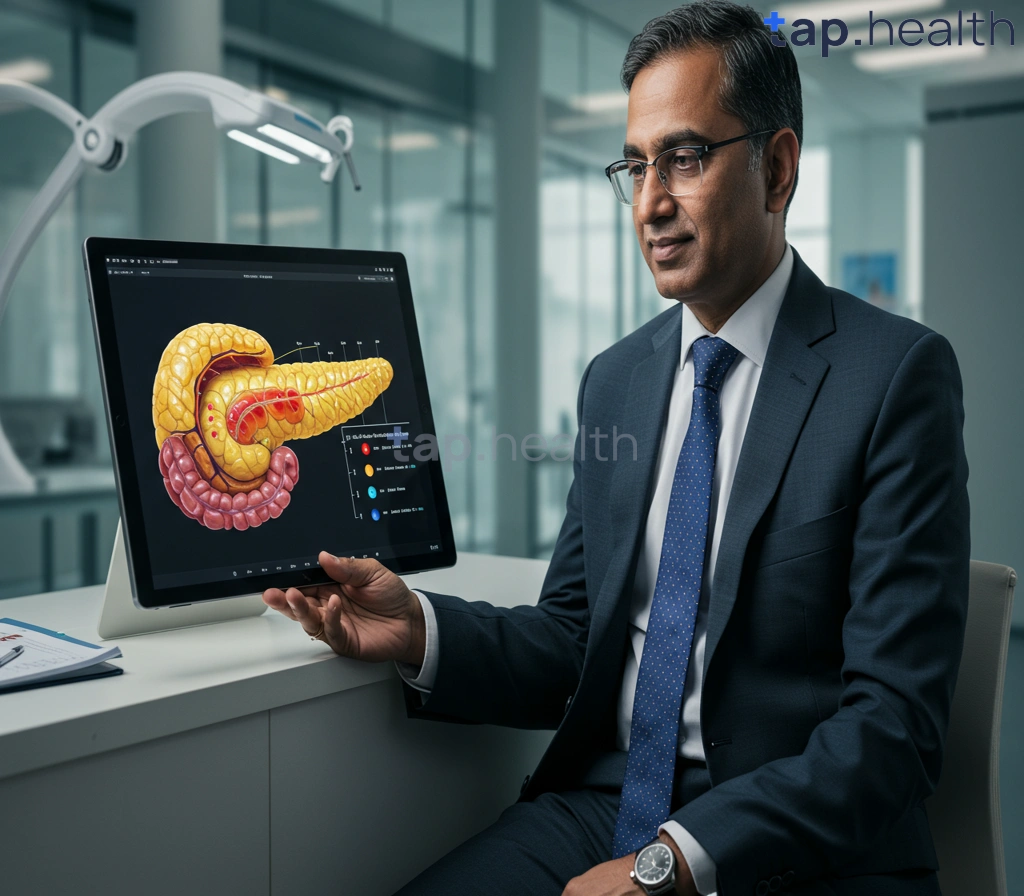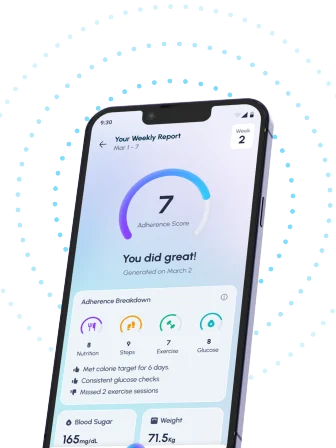Table of Contents
- Understanding Type 1 Diabetes Diagnosis
- Effective Type 1 Diabetes Treatment Options
- Managing Type 1 Diabetes: A Comprehensive Guide
- Type 1 Diabetes: Prevention and Early Intervention
- Living Well with Type 1 Diabetes: Strategies for Success
- Frequently Asked Questions
Living with Type 1 Diabetes can feel like navigating a complex maze, but understanding the journey is the first step towards confident management. This blog post dives deep into Type 1 Diabetes: Diagnosis, Treatment, and Management Strategies, offering clear and concise information to empower you. We’ll explore the diagnostic process, delve into various treatment options available today, and equip you with practical strategies for daily living. Whether you’re newly diagnosed or a seasoned veteran managing your condition, we’re here to help you feel more in control and less overwhelmed. Let’s work together to unravel the mysteries of Type 1 Diabetes and build a healthier, happier future.
Understanding Type 1 Diabetes Diagnosis
Type 1 diabetes—an autoimmune disease affecting roughly 2 million Americans, including many children—demands swift and accurate diagnosis. Early detection is the key to unlocking effective management and preventing serious long-term problems. This is especially crucial in hot, humid climates like India, where dehydration risks significantly heighten the stakes.
Want to better understand how it differs from type 2? Check out our helpful article on the differences between type 1 and type 2 diabetes. Learn more about diabetes statistics
Recognizing the Symptoms
Symptoms can sneak up on you gradually or hit hard and fast. Look out for:
- Increased thirst and frequent urination (you might even find yourself making more trips to the bathroom at night!)
- Unexplained weight loss – even if you aren’t trying to diet.
- Extreme hunger (always feeling famished, no matter how much you eat).
- Unexplained fatigue – feeling constantly wiped out.
In kids, bed-wetting can be a red flag. Don’t ignore these symptoms; they warrant a doctor’s visit, particularly in areas with limited healthcare access.
Diagnostic Procedures
Diagnosis relies on blood tests:
- Blood glucose levels: Both fasting and random levels are checked to see how well your body is processing sugar.
- HbA1c levels: This gives a snapshot of your average blood sugar over the past few months.
- Antibody tests: These identify the autoimmune markers that are a hallmark of type 1 diabetes.
Access to these tests varies, so getting checked by a healthcare professional promptly is key.
Importance of Early Intervention
Early diagnosis means starting insulin therapy right away. This is crucial for managing blood sugar and preventing scary complications like diabetic ketoacidosis (DKA). DKA is particularly dangerous in tropical climates due to the increased risk of dehydration. In India and other tropical countries, consistent monitoring, culturally appropriate dietary adjustments, and access to affordable insulin are vital for long-term success.
Effective Type 1 Diabetes Treatment Options
Living with type 1 diabetes means a lifelong commitment to managing blood sugar levels. It’s not a walk in the park, but with the right approach, you can live a full and healthy life. Unlike type 2 diabetes, where lifestyle changes can make a huge difference (delaying or even preventing it in up to 80% of cases, as a government report highlights here), type 1 requires a different strategy. While lifestyle doesn’t cause type 1, understanding potential triggers is still important.
Intrigued? Check out this article on the potential link between certain medications and type 1 diabetes: Can Drugs Cause Type 1 Diabetes?
Insulin Therapy: The Foundation
Insulin therapy is absolutely fundamental for managing type 1 diabetes. Think of it as replacing what your body can no longer produce naturally. This usually means daily injections or using an insulin pump – a small device that delivers insulin continuously. There are different types of insulin, each acting at a different speed, so finding the right fit for your lifestyle is key. Regular blood sugar monitoring? Essential for adjusting your insulin doses effectively and keeping things on track.
Dietary Strategies: Fueling Your Body Right
Eating well is crucial for managing blood sugar. This isn’t about strict diets, but rather focusing on nutrient-rich foods. In many Indian and tropical contexts, that means embracing fresh fruits and vegetables, whole grains, and limiting processed foods, sugary drinks, and refined carbs. A registered dietitian familiar with regional cuisine can help tailor a meal plan to your specific needs and preferences.
Lifestyle: Movement and Mindfulness
Regular physical activity is a game-changer. It improves your body’s response to insulin and boosts your overall health. Find activities you enjoy—yoga, a brisk walk, anything that gets you moving! Stress management is equally vital. Techniques like meditation or mindfulness can help keep blood sugar fluctuations in check, especially in high-pressure environments.
Healthcare: Your Partner in Management
Regular check-ups with your doctor are non-negotiable. They’ll monitor your HbA1c (a measure of long-term blood sugar control), blood pressure, and cholesterol. Early detection of complications is key to preventing serious issues. Actively engaging with your healthcare team ensures you receive the best possible care and support. Prioritizing access to consistent healthcare is paramount for living well with type 1 diabetes.
Managing Type 1 Diabetes: A Comprehensive Guide
Understanding Type 1 Diabetes in Indian and Tropical Climates
Type 1 diabetes, an autoimmune disease affecting 1.2 million children and adolescents worldwide (https://diabetesatlas.org/data/en/world/), presents unique hurdles in India’s hot, humid climate. Imagine this: the sweltering heat drains you, making you sweat profusely. This increased perspiration can quickly lead to dehydration and throws your blood sugar levels into a rollercoaster. Regular monitoring and careful insulin adjustments become even more critical.
Dietary Considerations and Lifestyle Adaptations
Navigating blood sugar levels in India requires a mindful approach to diet. Traditional Indian cuisine, often rich in carbohydrates, needs careful portion control. Think brown rice over white, whole wheat rotis instead of refined flour, and load up on fiber-packed fruits and veggies. Regular exercise is a game-changer—it helps manage weight and improves insulin sensitivity. It’s especially crucial in our increasingly sedentary urban lifestyles. Parents of children with Type 1 diabetes will find invaluable support and practical tips in this guide: http://tap.health/tips-for-parents-of-kids-with-type-1-diabetes/
Access to Healthcare and Support
Affordable insulin and regular check-ups are unfortunately not always easy to access. The financial burden can be immense for many families. Connecting with local support groups becomes crucial. These groups offer invaluable peer support and practical advice, helping you navigate the region-specific challenges.
Practical Tips for Effective Management
- Always carry your glucose meter and emergency supplies.
- Hydration is key, especially in the heat. Think of it like refueling your car – you need to keep your body topped up.
- Educate your loved ones about hypoglycemia and hyperglycemia symptoms. Early recognition is vital.
- Regular check-ins with your doctor are essential to fine-tune your plan, taking into account both your needs and the climate.
Consistent monitoring and proactive management are your best allies. It’s a journey, but with the right support and strategies, you can thrive.
Type 1 Diabetes: Prevention and Early Intervention
Understanding the Indian Context
India faces a unique challenge with Type 1 diabetes. We’re seeing a surprisingly high number of cases appearing between ages 25 and 40 – much later than typical global trends. This suggests something specific to our climate, lifestyle, and genetics is at play. Understanding these factors is key to tackling this rising concern.
Lifestyle Modifications for Prevention
While we can’t prevent Type 1 diabetes like we can Type 2, a healthy lifestyle might delay its onset or lessen its impact. Think of it like this: a strong immune system is better equipped to handle challenges. A diet packed with the vibrant fruits, vegetables, and whole grains abundant in Indian cuisine is a great start. Regular movement – even a brisk daily walk – helps maintain a healthy weight and improves insulin sensitivity. And let’s not forget stress reduction – yoga and meditation, deeply rooted in Indian culture, are fantastic tools.
Early Detection and Management
Early detection is crucial. Regular checkups, including blood glucose tests, are essential, particularly if diabetes runs in your family or you’re experiencing symptoms like extreme thirst, frequent urination, or unexplained weight loss. A quick diagnosis means timely intervention, minimizing long-term complications. Widespread awareness and accessible screening programs are vital for early diagnosis. To grasp how Type 1 diabetes disrupts the body’s delicate balance, check out this resource: how Type 1 diabetes affects homeostasis.
Seeking Expert Guidance
Worried about your risk, or experiencing symptoms? Don’t hesitate to consult an endocrinologist or diabetologist. Early intervention tailored to Indian contexts can make a huge difference. They can guide you towards a personalized management plan that blends modern medicine with traditional approaches, helping you live well with this condition.
Living Well with Type 1 Diabetes: Strategies for Success
Understanding Type 1 Diabetes in Indian and Tropical Climates
Type 1 diabetes presents unique hurdles in hot, humid climates like those across India and many tropical nations. Managing blood sugar effectively becomes a real balancing act. Increased sweating and dehydration, common in these regions, significantly impact glucose control. Think about it – your body’s already working harder to regulate temperature, adding another layer of complexity to managing your diabetes.
The IDF Diabetes Atlas highlights the challenge: a substantial 61% of the global diabetes population is between 20-64 years old (https://diabetesatlas.org/data/en/world/), emphasizing the need for early diagnosis and lifelong strategies for this age group.
Dietary Adaptations and Hydration
The delicious, carbohydrate-rich Indian diet needs careful consideration. Focus on complex carbs like whole grains over refined sugars. Think brown rice over white, for instance. Load up on colorful fruits and vegetables – variety is key! Portion control is your friend here. And hydration is crucial. Dehydration throws blood sugar levels out of whack, so drink plenty of water. Coconut water, readily available and refreshing in many regions, is a fantastic hydrating option.
Lifestyle Modifications and Access to Healthcare
Regular exercise is non-negotiable, but the intense tropical heat requires smart planning. Early mornings or evenings are best to avoid heatstroke. Remember to stay extra hydrated during and after workouts. Access to quality healthcare and affordable insulin remains a critical concern in many developing countries. Connecting with local support groups offers invaluable emotional and practical support, and advocating for improved healthcare access is vital.
For more practical tips, check out our guide: 10 Daily Habits for Better Type 1 Diabetes Control.
Monitoring and Technological Advancements
Regular blood glucose monitoring is essential. Continuous glucose monitors (CGMs) are becoming more accessible, offering invaluable real-time data on glucose fluctuations. This empowers proactive insulin adjustments, making management significantly easier. Technology is bridging the gap, even in areas with limited resources.
Conclusion
Successfully managing Type 1 diabetes in hot climates requires a personalized, proactive approach. By adapting your diet to local foods, staying hydrated, exercising smartly, and leveraging technology, you can absolutely thrive. Connect with your doctor and local support groups for customized advice and unwavering support.
Frequently Asked Questions on Type 1 Diabetes
Q1. What are the key symptoms of Type 1 diabetes, and when should I seek medical attention?
Key symptoms include increased thirst and frequent urination, unexplained weight loss, extreme hunger, and unexplained fatigue. In children, bed-wetting can be a red flag. These symptoms warrant a doctor’s visit immediately.
Q2. How is Type 1 diabetes diagnosed, and what tests are involved?
Diagnosis involves blood tests: blood glucose levels (both fasting and random) to assess sugar processing; HbA1c levels for a snapshot of average blood sugar over the past few months; and antibody tests to identify autoimmune markers characteristic of Type 1 diabetes.
Q3. What are the most effective treatment options for managing Type 1 diabetes?
The cornerstone of treatment is insulin therapy (injections or an insulin pump). Dietary strategies focusing on nutrient-rich foods, regular physical activity, and stress management techniques are also crucial. Regular check-ups with your doctor for monitoring are essential.
Q4. How can I manage Type 1 diabetes effectively in hot and humid climates, such as those in India?
In hot climates, managing diabetes requires extra vigilance due to increased risk of dehydration. This means careful hydration, mindful adjustments to insulin doses based on activity and perspiration levels, and culturally appropriate dietary adjustments with a focus on portion control and complex carbohydrates.
Q5. What role does early detection and intervention play in managing Type 1 diabetes, and where can I find support?
Early diagnosis allows for prompt insulin therapy, preventing serious complications. Connecting with local support groups, healthcare professionals, and utilizing available resources like educational materials and online communities provides crucial support and improves management.




